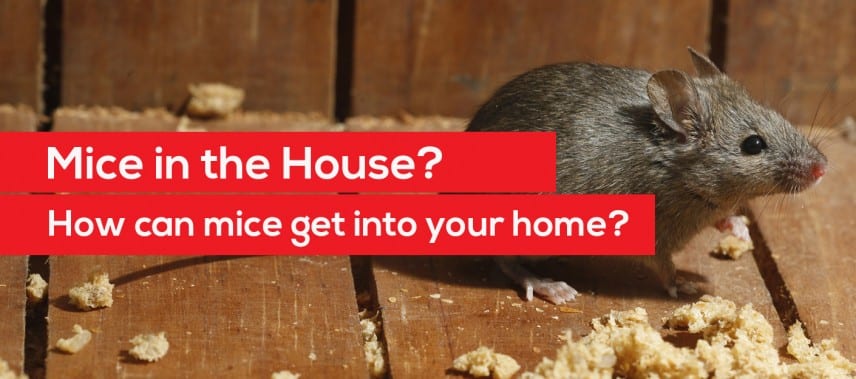As the days get colder, things are just starting to heat up in your walls. Mice are moving indoors to stay warm and well-fed during the chilly winter months. These common household pests may be small but they can cause huge headaches for homeowners. Not only can mice contaminate food and surfaces with salmonella and other bacteria, but these critters and their droppings are vectors for the hantavirus. Mice can also bring fleas, ticks and other parasites into your home.
Entry Point #1: Corner Posts and J-Channels
Corner posts are used to finish off the ends of siding at the corners of your house, and j-channels are used like trim around windows and doors to hide the ends of vinyl siding. The hollow corner posts make it easy for mice to climb up the side of your house and the gaps between j-channels and siding are often large enough for mice to get in behind the siding.
Entry Point #2: Foundation
Mice can get into your house through cracks in the foundation. Rubble foundations and stacked stone foundations are particularly susceptible to gaps that are large enough for rodents to get through.
Entry Point #3: Attached Garages
Uneven garage doors, leaving doors open for long periods of time and clutter in your attached garage are all invitations for unwanted houseguests.
Entry Point #4: Bilco Doors
“Bilco doors” is a common name for the slanted cellar door on the outside of some houses that leads to the basement. Gaps between the two doors are often large enough for mice to sneak through.
Entry Point #5: Gutters and Downspout
Mice can easily climb up downspouts and along gutters to access any openings near or on the roof of your house.
Solution
Contact Pointe Pest Control. We offer rodent control services to homes and businesses. Our experts are trained to locate areas of rodent activity and potential rodent entry points and to eliminate the problem. Contact us today and we will perform a rodent control inspection to ensure you and your family are protected.


